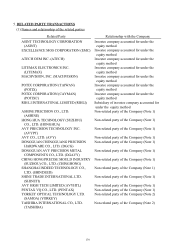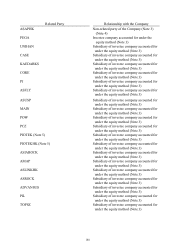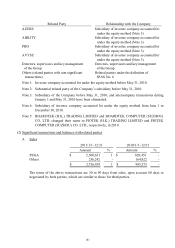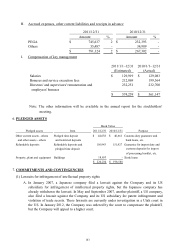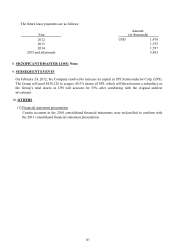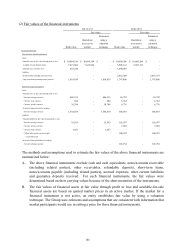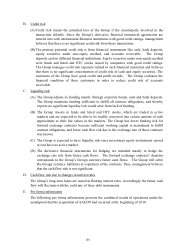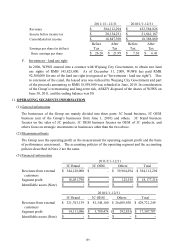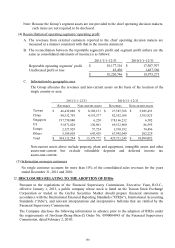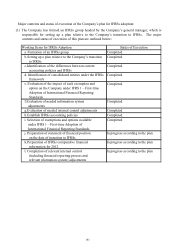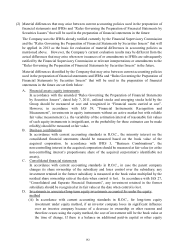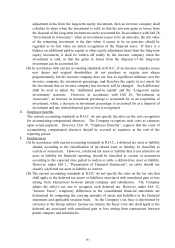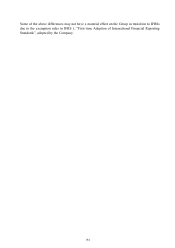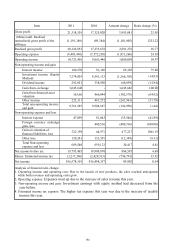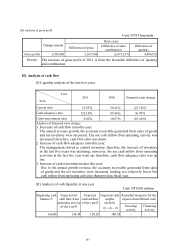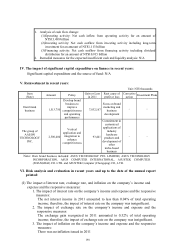Asus 2011 Annual Report Download - page 192
Download and view the complete annual report
Please find page 192 of the 2011 Asus annual report below. You can navigate through the pages in the report by either clicking on the pages listed below, or by using the keyword search tool below to find specific information within the annual report.
188
~60~
B. Credit risk
(A)Credit risk means the potential loss of the Group if the counterparty involved in the
transaction defaults. Since the Group’s derivative financial instrument agreements are
entered into with international financial institutions with good credit ratings, management
believes that there is no significant credit risk from these transactions.
(B) The primary potential credit risk is from financial instruments like cash, bank deposits,
equity securities under non-equity method, and accounts receivable. The Group
deposits cash in different financial institutions. Equity securities under non-equity method
were funds and listed and OTC stocks issued by companies with good credit ratings.
The Group manages credit risk exposure related to each financial institution and believes
that there is no significant concentration of credit risk of cash and equity securities. The
customers of the Group have good credit and profit records. The Group evaluates the
financial condition of these customers in order to reduce credit risk of accounts
receivable.
C. Liquidity risk
(A) The Group adjusts its funding mainly through corporate bonds, cash and bank deposits.
The Group maintains funding sufficient to fulfill all contract obligations, and thereby
expects no significant liquidity risk would arise from lack of funding.
(B) The Group invests in funds and listed and OTC stocks, which are traded in active
markets and are expected to be able to be readily converted into certain amount of cash
approximate to their fair values in the markets. The Group has lower funding risk for
forward exchange contracts because sufficient working capital is maintained to fulfill
contract obligations, and lower cash flow risk due to the exchange rate of those contracts
was known.
(C) The Group is expected to have liquidity risk since investment equity instruments carried
at cost have no active market.
(D) The derivative financial instruments for hedging are intended mainly to hedge the
exchange rate risk from future cash flows. The forward exchange contracts’ duration
corresponds to the Group’s foreign currency future cash flows. The Group will settle
the foreign currency liabilities at expiration of the contracts. Thus, management believes
that the cash flow risk is not significant.
D. Cash flow risk due to changes in interest rates
The Group’s long-term loans are issued at floating interest rates. Accordingly, the future cash
flow will fluctuate with the yield rate of these debt instruments.
E. Pro forma information
The following pro forma information presents the combined results of operations under the
assumption that the acquisition of AAEON had occurred at the beginning of 2010.



